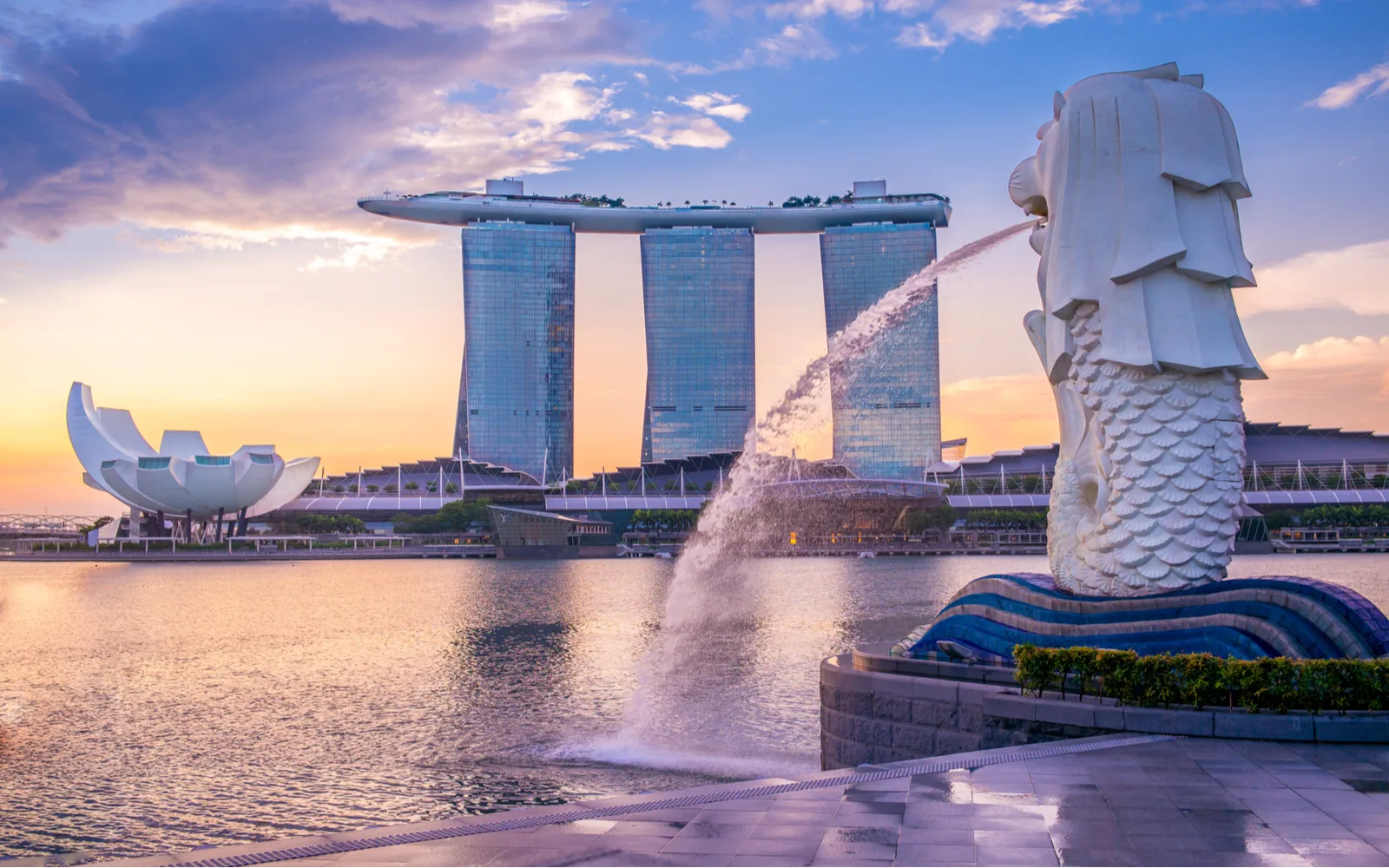What's the best time to visit Singapore?
The best time to visit Singapore is from February to April, offering relatively dry weather and numerous cultural festivals. This period avoids the peak monsoon season and includes major events like Chinese New Year and Holi, enriching your experience with vibrant celebrations. Despite Singapore’s year-round tropical climate, these months provide a slight reprieve from the usual heat and humidity.
The Southeast Asian country of Singapore is a unique global destination thanks to its modern infrastructure and location at the crossroads of the world.
Singapore is a global trade power and the center of many innovations, which you can see in the hypermodern skyline and other attractions. Take in the view from Marina Bay, or visit the futuristic Gardens by the Bay.
Thanks to its location and role, the city-state is also an ethnic melting pot, which you can tell by exploring the Chinese, Indian, Malay, and other neighborhoods and by tasting the amazing hawker food.
Singapore is such a stunning destination that even the airport is world-famous. But making the most of your trip means picking the best time to visit. We’ll show you this and more below.
The Overall Best Time to Visit Singapore
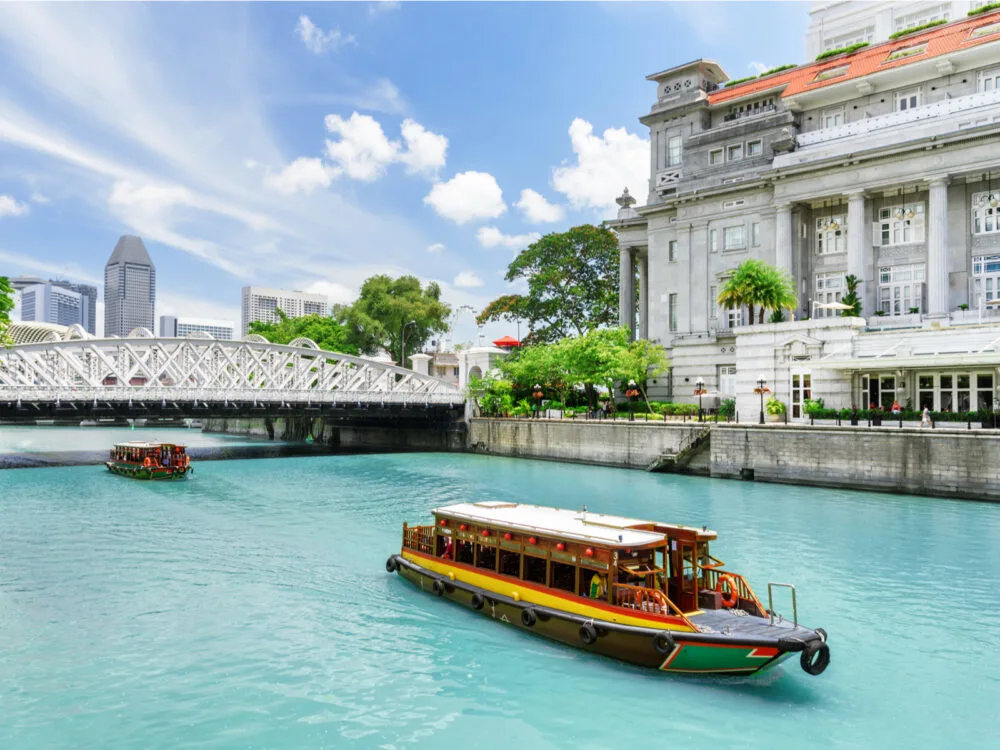
Efired/Shutterstock
The overall best time to visit Singapore is from February to April,when you’ll get the best combination of decent weather and plenty of events.
Singapore is a year-round destination for a few reasons. The city-state is perpetually bustling, hosting international events or local cultural festivals (with this many ethnic groups calling Singapore home, it’s no wonder that the cultural calendar is full).
Any time you go, you’re guaranteed to find something to do. The weather is also fairly consistent throughout the year. Singapore has a tropical climate because it’s located only a few degrees away from the equator.
That means the weather is consistently hot, humid, and rainy all year round, with only slight fluctuations in terms of the amount of precipitation and temperature.
February to April is when you can avoid the worst of Singapore’s weather because, according to the official Meteorological Service of Singapore, those months fall into the dry phase of the northeastern monsoon season and the inter-monsoon period.
Although you will still get frequent storms, you avoid the worst of the monsoons. Although Singapore is rainy all year round, February and March are some of the driest months of the year, with only 9–12 rainy days per month.
April is rainier, but it’s still not as bad. These months also allow you to beat the worst of the heat, which tends to increase starting in May and stay fairly oppressive throughout June and July.
The entire year in Singapore is packed with cultural festivals, but this period stands out because it hosts some of the most important celebrations for Singapore’s many ethnic and religious groups.
Many of these festivals don’t have exact dates because they follow lunar calendars, but they fall within this period. One of the most stunning is Chinese New Year, whose exact date changes every year but usually occurs in late January or February.
Chinatown comes alive with thousands of elaborate lanterns, as well as performances, firecrackers, parades, and vendors selling snacks particular to the holiday.
In March, it’s the Indian community’s turn to celebrate with Holi. This traditional festival celebrates the arrival of spring with prayers—and with colorful powders thrown at passersby. Many local organizations organize Holi runs and festivities—just make sure to wear your old clothes.
Cheapest Time to Visit Singapore
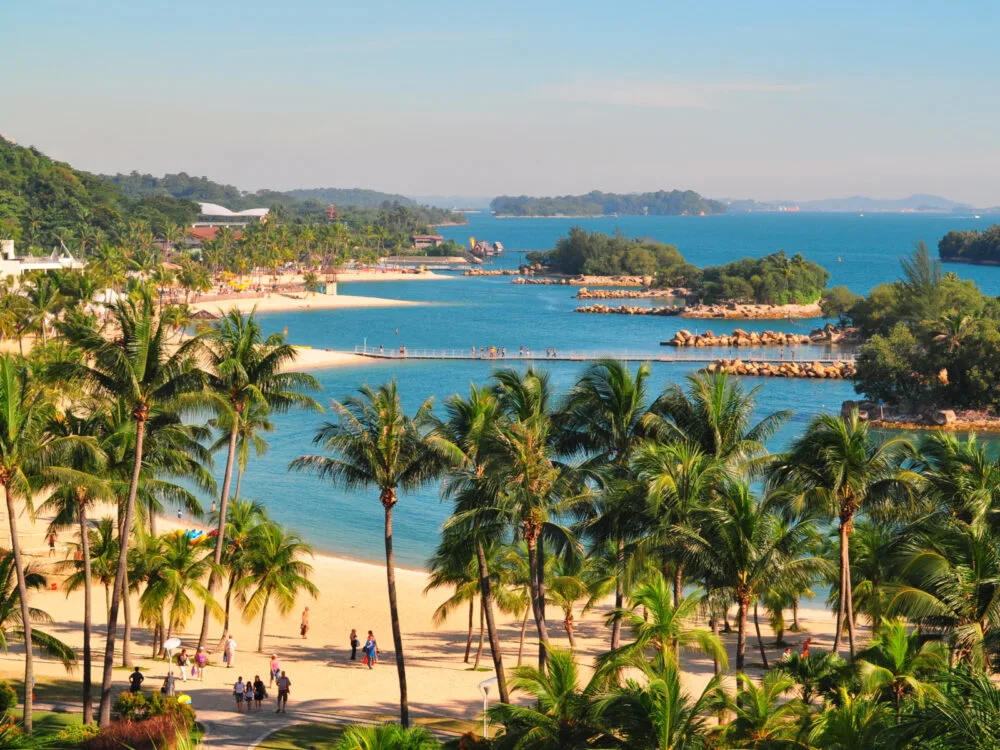
Sammy Wee/Shutterstock
The cheapest time to visit Singapore is in August and early September, but even then, don’t expect big savings. The question of visiting Singapore on a budget isn’t when it is cheapest, but when it will be least expensive.
The country is notoriously pricy, and it’s difficult to visit on a budget. The prices spike during holidays like Chinese New Year or popular events like the Formula One Night Race in late September.
Before booking, check the events calendar to make sure you are avoiding major holidays. However, August and early September mark a kind of quieter period when there aren’t as many major holidays so demand for hotel rooms won’t be as high.
You can even find deals on popular hotels for 20%–30% off. Book a few months in advance to take advantage of these savings, as even during the slower months, hotel rooms tend to go up in price the closer to the date you get.
This time is also the best time to fly to Singapore. August has the least demand, so prices tend to drop. Singapore Airlines usually has sales around Easter, Black Friday, and in September and October.
This time is also the cheapest time for shopping. The Great Singapore Sale, a massive event organized by local retailers when many businesses in town have steep discounts, usually occurs some time between July and early October.
Least Busy Time to Visit Singapore
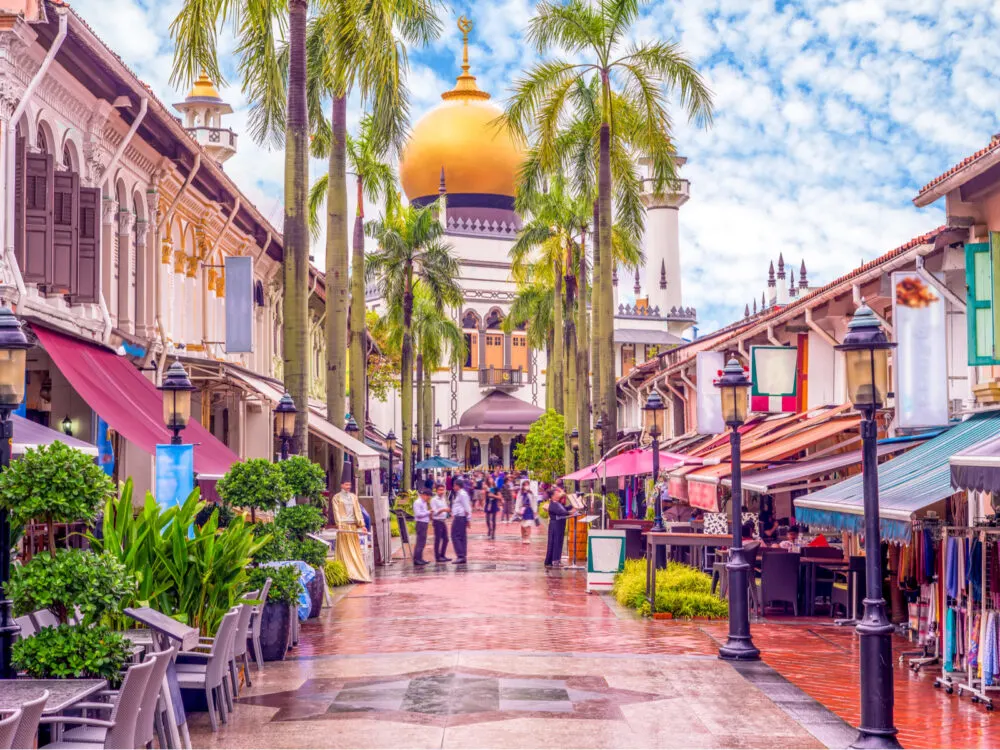
Richie Chan/Shutterstock
Singapore is fairly busy throughout the year, but the least busy time to visit is during the relatively quiet period from August to October. August, September, and October have fewer crowds compared to the rest of the year.
Kids are back in school in many neighboring countries and in Singapore, where the term break only lasts through the month of June.
The biggest event is the Formula One Night Race, which attracts a lot of people in late September, but outside of that week, the crowds are much more manageable in town. This period falls in the Southwestern monsoon season, but this period isn’t as bad.
While you can expect frequent storms, there is less rain in August, the peak of this monsoon season, than in April.
You can always explore Singapore’s many indoor attractions, such as the many malls and the National Museum of Singapore, which are also conveniently airconditioned. This being Singapore, there are plenty of festivals even during this relatively quiet period in the calendar.
August 9th is Singapore National Day, so expect parades and other festivities. The season also hosts many Chinese festivals that are not as crowded as Chinese New Year but are just as interesting.
The Hungry Ghost Festival honoring deceased ancestors occurs in August, and you can see the burning of ritual offerings and neighborhood celebrations.
Less somber is the Mid-Autumn Festival, held in September/October, when people gather to celebrate the moon with moon-viewing parties, parades full of lights, and tasty mooncakes.
Worst Time to Visit Singapore
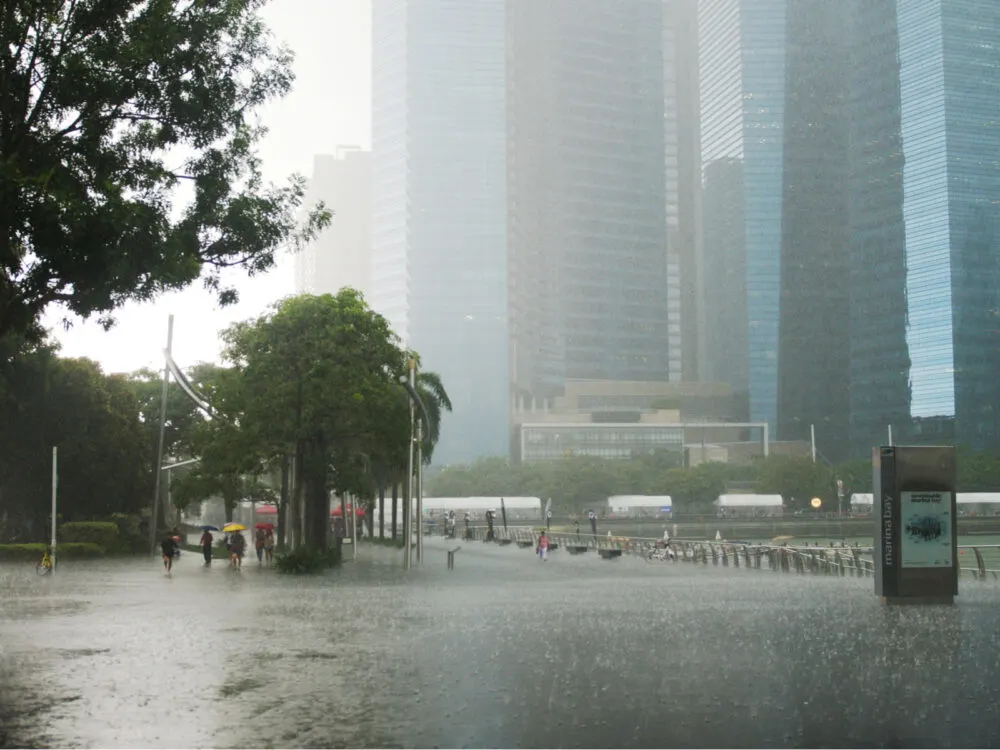
Mariyaermolaeva/Shutterstock
The worst time to visit Singapore is during the November–January monsoon season, but even then, you can find plenty of ways to keep dry. The worst months to visit weather-wise are November, December, and January.
These months fall into the wet phase of the Northeast monsoon season, the more dramatic of Singapore’s two monsoon seasons. These months have nearly 20 rainy days per month and the highest volume of rain all year in Singapore.
Rains peak in December with nearly 350 mm (13.7 inches) of rain per month. The torrential rains frequently cause flooding in the country.
Thankfully, Singapore has good infrastructure, so most floods don’t result in loss of life, just property damage. If you do visit during this time, it’s a good time to check out indoor activities like shopping, visiting museums, and eating in the country’s top restaurants.
The rains also cool things down somewhat, making it a bit more pleasant to be outdoors once the rain stops. Of course, there are plenty of events during this time as well.
Late December and early January mark the holiday period for the country’s Christians, but people of all faiths enjoy the decorations along Orchard Road. On a less faithful note, December is when Southeast Asia’s party people descend on Singapore thanks to ZoukOut, a massive dance music festival.
Singapore by Month: Climate & Activities
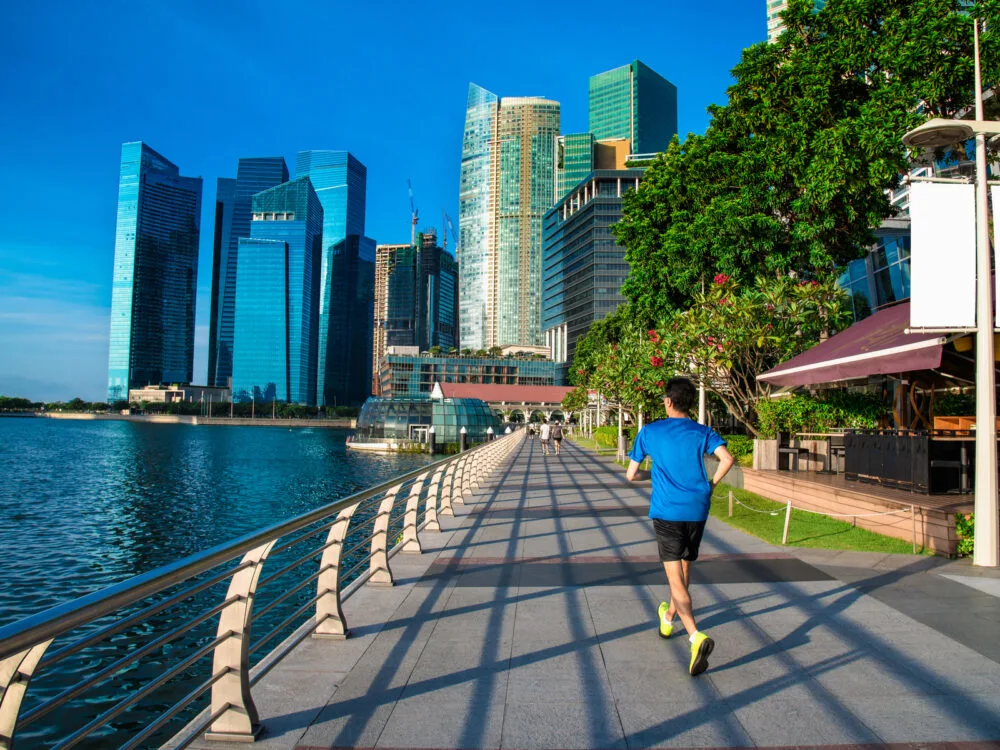
N_Sakarin/Shutterstock
Still unsure about the best time to visit Singapore? Check out the climate and activities available by month:
January
January in Singapore, part of the Northeast Monsoon season, sees temperatures from 76 to 86°F (24 to 30°C). It’s ideal for exploring the iconic Gardens by the Bay, enjoying the festivities of Pongal (a Tamil harvest festival), and shopping in the famous Orchard Road district.
February
February continues with warm and humid weather, perfect for celebrating Chinese New Year with vibrant street parades and lion dances, exploring the cultural enclaves like Chinatown and Little India, and visiting the Singapore Art Museum.
March
As the rainy season persists, March brings temperatures from 76 to 88°F (24 to 31°C). Enjoy indoor attractions like the National Gallery Singapore, explore the historic Fort Canning Park, and experience the vibrant nightlife at Clarke Quay.
April
April’s hot weather, with temperatures between 77 to 89°F (25 to 32°C), invites you to the beautiful Singapore Botanic Gardens, a UNESCO World Heritage Site, and to enjoy the Singapore International Film Festival.
May
May offers hotter days, from 79 to 90°F (26 to 32°C), ideal for cooling off at the Wild Wild Wet water park, exploring the interactive exhibits at the ArtScience Museum, and enjoying the culinary delights at the annual Singapore Food Festival.
June
June, marking the start of the Southwest Monsoon season with temperatures between 79 to 90°F (26 to 32°C), is perfect for shopping at the Great Singapore Sale, visiting the world-renowned Singapore Zoo, and exploring the colorful Jurong Bird Park.
July
July’s warm climate, ranging from 79 to 89°F (26 to 32°C), is ideal for attending the Singapore Night Festival, exploring the unique Haw Par Villa theme park, and enjoying the beach and water sports on Sentosa Island.
August
In August, with temperatures of 79 to 89°F (26 to 32°C), celebrate Singapore’s National Day with fireworks and festivities, visit the Asian Civilisations Museum, and enjoy the Singapore Garden Festival.
September
Welcoming the end of the monsoon, September, with temperatures from 77 to 89°F (25 to 32°C), is perfect for attending the Singapore Grand Prix, exploring the vibrant Haji Lane, and visiting the Peranakan Museum.
October
October’s warmer days, from 77 to 88°F (25 to 31°C), are ideal for exploring the bustling streets of Geylang, visiting the Sungei Buloh Wetland Reserve, and enjoying the Deepavali celebrations in Little India.
November
November, as the rainy season returns, temperatures from 77 to 88°F (25 to 31°C), is a great time for indoor attractions like the SEA Aquarium, enjoying the cultural performances at the Esplanade, and exploring the futuristic Jewel Changi Airport.
December
December brings festive cheer, with temperatures ranging from 76 to 86°F (24 to 30°C). Celebrate Christmas at the Orchard Road light-up, explore the festive markets, and ring in the New Year with spectacular fireworks at Marina Bay.
Frequently Asked Questions
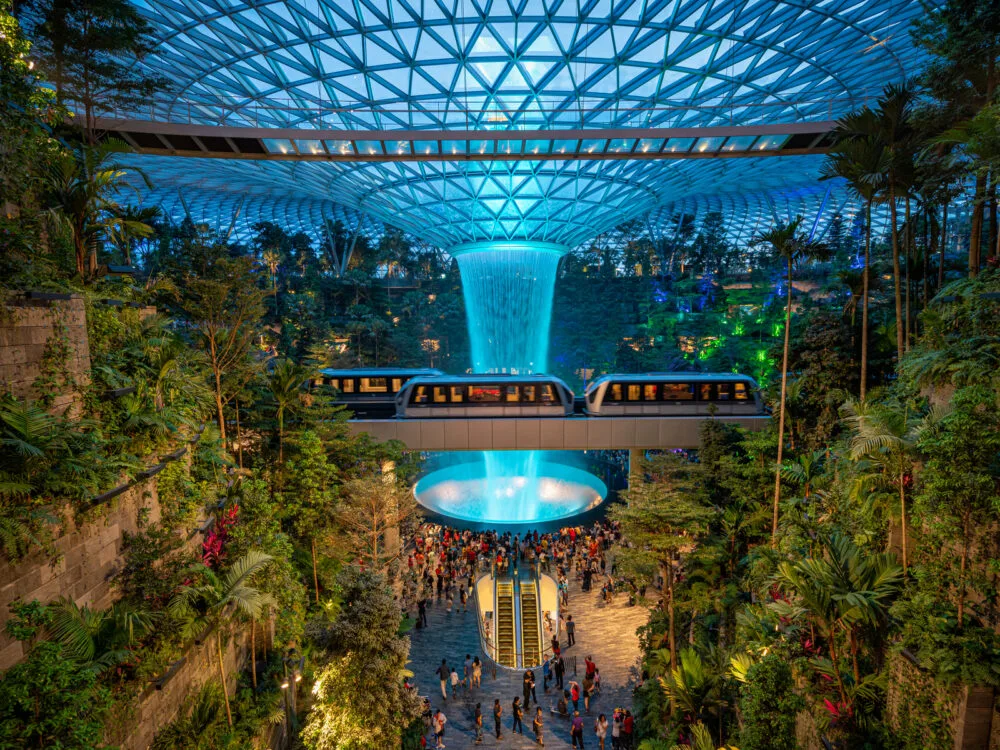
Travel Man/Shutterstock
Here are some common questions people have asked about visiting Singapore in the past:
What is the best month to go to Singapore?
The best month to go to Singapore is February, which has colorful festivities and relatively cool and dry weather.
What is the cheapest time to visit Singapore?
August and September are the cheapest times to visit Singapore thanks to relatively low hotel prices, sales on flights by major airlines, and the Great Singapore Sale.
What month is the rainy season in Singapore?
The two wet monsoon seasons in Singapore are November–January and June–August, but expect rain any time of the year.
What months are warm in Singapore?
Singapore is warm all year round because it has a tropical climate, so expect hot weather no matter when you visit.
How many days in Singapore are enough?
You should spend at least five days in Singapore to see all of its attractions, explore the diverse neighborhoods, and eat your heart out.
So, What’s the Best Time to Visit Singapore?
Singapore is a great year-round destination. February–April gives you the coolest, driest weather, while August and September are the best for deals.
So, with so much to see and do and plenty of amazing times to visit, what are you waiting for — book your trip today and experience for yourself all that Singapore has to offer. Happy travels!



